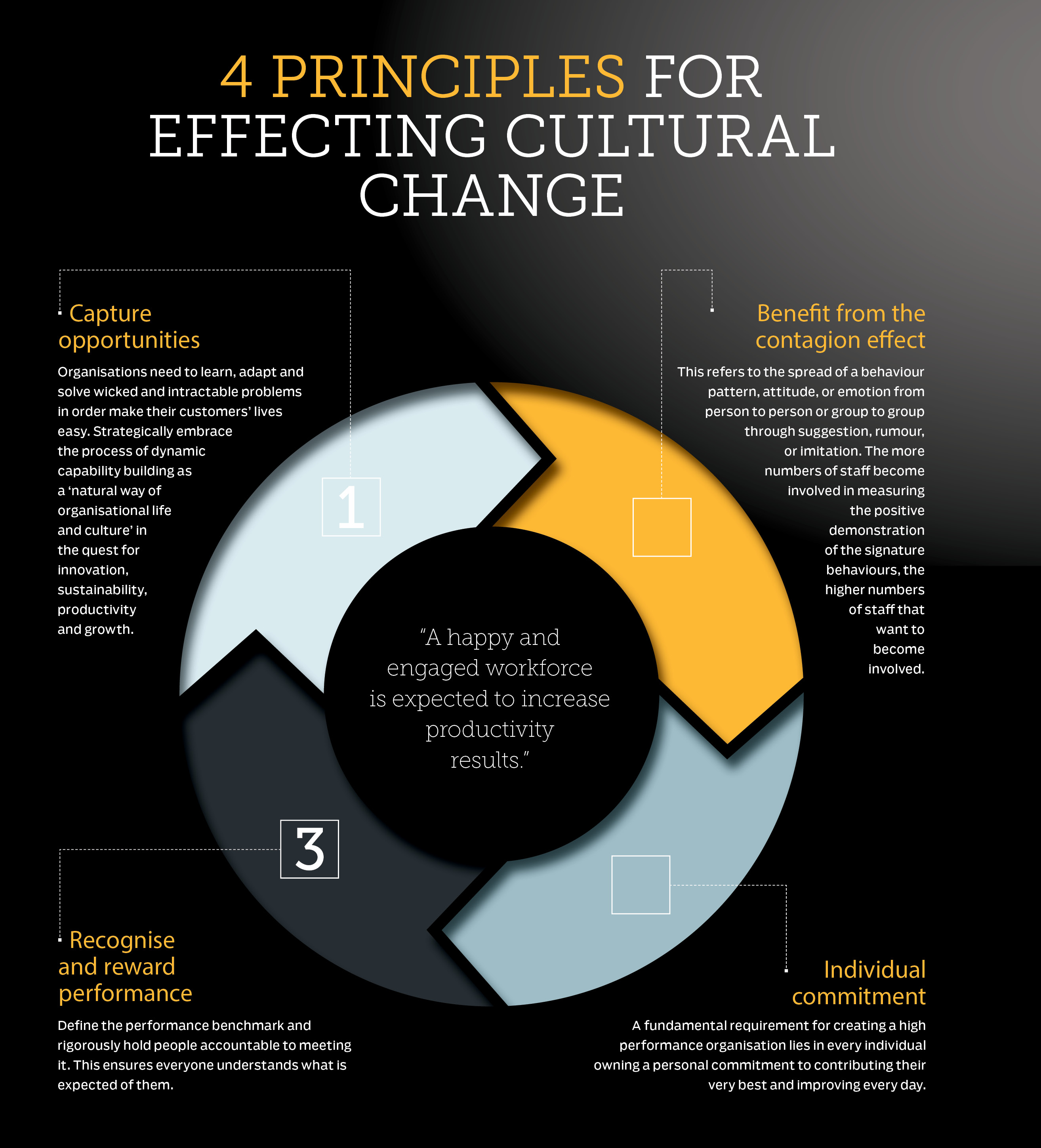Whenever a firm attains world-beating success, praise for its company culture is seldom far behind. But transforming a company’s culture with an eye for similar success is far from easy.
Changing company culture has to start at the top and the actions of its key executives, led by the CEO, are instrumental if that culture is to change.
But what is the definition of culture?
“Culture is potentially an esoteric term and hard to define,” said Rosalind Coffey, head of people, culture and client experience for Macquarie’s Banking and Financial Services business.
“We have distilled this into four key factors.”
Firstly, we focus on the behaviours, which is how we act towards each other in good times and bad, and how we behave with our clients. Secondly, we focus on symbols, which are the visible signs of culture such as what our office looks like and who is promoted.
“Thirdly, we focus on rituals such as the things we do together on a regular basis, which can as simple as breaking for morning tea as a team to ensuring we have a quarterly meeting with senior leaders to hear business updates first hand, and lastly we focus on stories, which is how we talk to and about each other and our clients.”
Different strokes
The reality is that each business has its own cultural norms from its office location and set-up, working hours, dress requirements and so. For a company with a poor culture, it is very difficult to change.
Most companies believe a simple engagement survey is the trick to driving both cultural change and innovation. In reality, nothing could be further from the truth.
“Culture is the cornerstone to a successful company, yet for some reason most companies ignore it,” said Sue Jauncey, Pulse Australasia founder and director.
“Today the focus is all about staff engagement with leaders advised to measure engagement levels because a happy and engaged workforce is expected to increase productivity results.”
She says the theory is that by increasing the discretionary effort of the individual employees we have more engaged and subsequently more productive employees but we may not understand the connections between engagement results and what they may be unintentionally reinforcing?”
Troop morale
A recent Aon Hewitt survey reported 57 per cent of staff did not trust their senior leadership teams. The money out the door from disengaged employees is estimated to cost Australia more than $33 billion a year. One way to increase personal accountability is to create an aligned culture within the organisation based on key psychological principles of human behaviour.
Once established, key signature behaviours become ingrained in the company culture. These are then led by the CEO and positively acted out by everyone. This is then followed by developing accountable business measures, which can be accurately assessed.
Lighting the fuse
Encouraging innovation is another part of the cultural challenge and while some companies think that by establishing an innovation team or even a dedicated room will create the catalyst for a cultural innovative shift, the challenge is far deeper than that.
“Innovation as a term is widely used in so many contexts and scenarios, that is so all encompassing; it risks losing practical meaning unless contextualised,” said Associate Professor Renu Agarwal, Director, Strategic Supply Chain Management program, UTS Business School, Sydney.
“The phenomenon of innovation has historically brought transformation and is increasingly seen through a multidisciplinary lens spanning the science and practice of engineering, economics, sociology, organisational behaviour, and management.”
For a company to be innovative, it needs to be led strongly internally and have a high performance internal culture. This has to an objective throughout the whole company.
“An internal culture of high performance implies becoming more innovative, and not the other way round,” Agarwal said.
“Yet few companies such as Google and Apple are in that league. These companies got there not by chance but by choice.”








